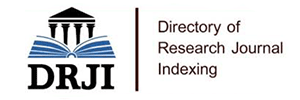
Journal Basic Info
**Impact Factor calculated based on Google Scholar Citations. Please contact us for any more details.Major Scope
- Lymphoma
- Lung Cancers
- Chemotherapy and Radiotherapy
- Kidney Cancer
- Head and Neck Oncology
- Endoscopy Methods
- Pancreatic Cancer
- Thoracic Oncology
Abstract
Citation: Clin Oncol. 2023;8(1):1986.DOI: 10.25107/2474-1663.1986
Maternal and Paternal Imprinting in the Segregation of Malignant Blood Disorders
Jønsson V, Awan H, Johannesen TB and Tjønnfjord GE
Department of Hematology, Oslo University Hospital, and Institute of Clinical Medicine, University of Oslo, Norway
Center for Information Technology Service (USIT), Oslo University Hospital, and Institute of Clinical Medicine, University of Oslo, Norway
Norwegian Cancer Registry, Norway
Department of Hematology, Oslo University Hospital and K.G, Jebsen Center for B-cell Malignancies and Institute of Clinical Medicine, University of Oslo, Norway
*Correspondance to: Viggo Jønsson
PDF Full Text Research Article | Open Access
Abstract:
The malignant lymphoproliferative and myeloproliferative disorders are an entity of blood disorders derived from mutated clones on the hematopoietic stem cell line. One hundred and twelve families with two or more cases of malignant blood disease were included in the study after cross-check with the national cancer registries. Based on the pedigree of each family, the parental affiliation of pairs of affected parent-offspring was recorded. Chronic Lymphocytic Leukemia (CLL) showed a pattern of predominant matrilineal inheritance with an equal number of CLL male and CLL female offspring while in patrilineal inheritance, numerically fewer pairs were seen with a surplus of male CLL. Pronounced clustering was found in CLL as offspring were only seen in two generations after the parents. In non-CLL, i.e., all other cases of malignant blood disease than CLL, the same trend was seen, but with most non-CLL female offspring in the matrilineal line and no clustering. Compared with diagonal, so-called oblique inheritance, i.e., the segregation from the first and oldest patient in the pedigree, the proband, non-vertically to uncles, aunts, nephews, and nieces, recovered the trend from vertical inheritance with predominance of matrilineal affiliations and predominance of unaffected female «healthy» family members on the transgenerational route down through the pedigrees. With CLL as parents in such diagonal lines, the highest degree of anticipation i.e., increasing aggressive malignant disease with decreasing age at onset was seen. Our findings indicate that the overall picture of inheritance is compatible with combined bi-parental imprinting with maternal dominance and signs of antagonistic co-evolution of fitness.
Keywords:
Parental genomic imprinting; Anticipation; Female predominance; Familial malignant lymphoproliferative disorders; Familial malignant myeloproliferative disorders
Cite the Article:
Jønsson V, Awan H, Johannesen TB, Tjønnfjord GE. Maternal and Paternal Imprinting in the Segregation of Malignant Blood Disorders. Clin Oncol. 2023;8:1986..













